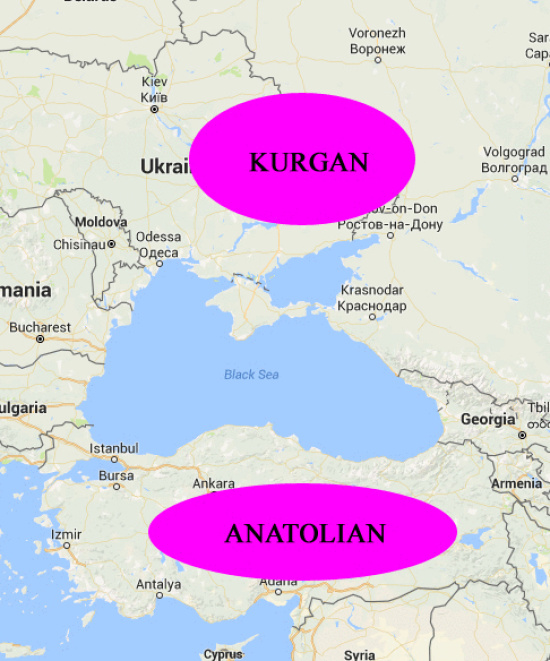“A quarter of human misery is toothache.”
— Thomas De Quincey, Confessions of an English Opium Eater
Pokémon GO is good for you. It gets people out and walking (unlike Call of Duty and Halo, for instance, where your body sits in front of a computer, no matter where your mind imagines it is). And it promotes sociability: actual flesh ’n’ blood people talking to one other. A couple who had just met over a shared Pokémon experience (good or bad I’m not sure, something about Piggy? Pidgey?) were happily chatting at the bar in Steve and Dave’s* when I happened by. Me, I’m pretty sure it’s a Chinese plot to take over the world, but what isn’t these days?
* Full disclosure: S&D have given me an entire wall to display some of my travel photos.
Goldeen makes an early morning appearance outside Ten Windows Williams. (Barry Evans)
Attila the Hun, aka “The Scourge of God,” was probably as responsible as any one man for the decline and fall of the Roman Empire. Not so much due to his prowess as a warrior, but because the Romans foolishly enlisted the Visigoths (erstwhile foes who had sacked Rome 40 years earlier) as allies when they faced him in battle near Châlons-en-Champagne in 451 AD. Atilla, for his part, had Ostrogoths in his army, so it was western Goths versus eastern Goths. When the dust had cleared – the battle was more or less a draw – the real winners were the Goths of both sides. Wikipedia probably understates the outcome, saying that these two Gothic tribes “played an important role in the fall of the Western Roman Empire.” (I compared the fall of Rome to the end of the American Empire here.)
Attila may have been the one man mostly responsible for the downfall, but Honoria was the one woman. She was Roman emperor Valentinian III’s sister, and to avoid being married off to an old Roman senator she sent Atilla her engagement ring. Taking this as an offer of marriage, he accepted, demanding half the Western Empire as dowry. When Valentinian nixed the deal, Atilla invaded Italy in 452. Leading, incidentally, to the founding of Venice, when local inhabitants fled to islands in the Adriatic Sea.
Legendary meeting between Pope Leo the Great and Attila outside Rome in 452. Saints Peter and Paul, acting in the role of papal goons, convinced Attila to retreat. Vatican fresco by Raphael, 1483–1520. (Public domain)
The debate over where the first speakers of Proto-Indo-European came from still rages. (This column is written in one of its many descendent languages – not so surprising, since nearly half the world speaks Indo-European.) However, the evidence increasingly favors nomadic herders who lived on the vast steppes north of the Black Sea. Starting some 6000 years ago, the Yamnaya, as they’re called, spread east and west with their newly-tamed horses; their genes survive in most Europeans today. The rival camp claims farmers from Anatolia (modern-day Turkey) first spoke P-I-E, taking themselves, their seeds and their language into Europe and Asia two millennia earlier.
Where did Proto-Indo-European originate? The leading “Kurgan Hypothesis” has the earliest speakers of P-I-E herding in the steppes north of the Black Sea. (Kurgans were burial mounds.) In the rival “Anatolian Hypothesis,” they were farmers in present-day Turkey. (Barry Evans after May 2016 Scientific American)
The week’s biggest news – you may have missed it, it certainly wasn’t blazoned on the front pages, although it should have been – is that a cheap microbial liquid is as effective at treating dental cavities as fillings. Silver diamine fluoride, or SDF was recently approved by the FDA as a tooth desentizer for adults, but it’s increasingly being used off-label as a substitute for drilling and filling. SDF is, according to Dr. Richard Niederman, Chairman of Epidemiology and Health Promotion at NYU College of Dentistry, “…better, faster, cheaper.” Better, because (unlike a filling) it kills the bacteria that cause decay, reducing the incidence of new cavities and the progression of caries by about 80 percent. Faster, because it takes half a minute to paint onto a tooth. Cheaper – $25 compared to around $150 for a filling.
For toddlers – who really shouldn’t be given general anesthesia – it can be a godsend: nearly a quarter of 2 to 5-year-olds have cavities. The downside is that SDF causes discoloration, and it doesn’t work for really large cavities. But hey…as one who well remembers low-speed dental drills with a shudder, this is Big News. Might have kept De Quincey off his daily opium fix, had it been around 200 years ago.



CLICK TO MANAGE